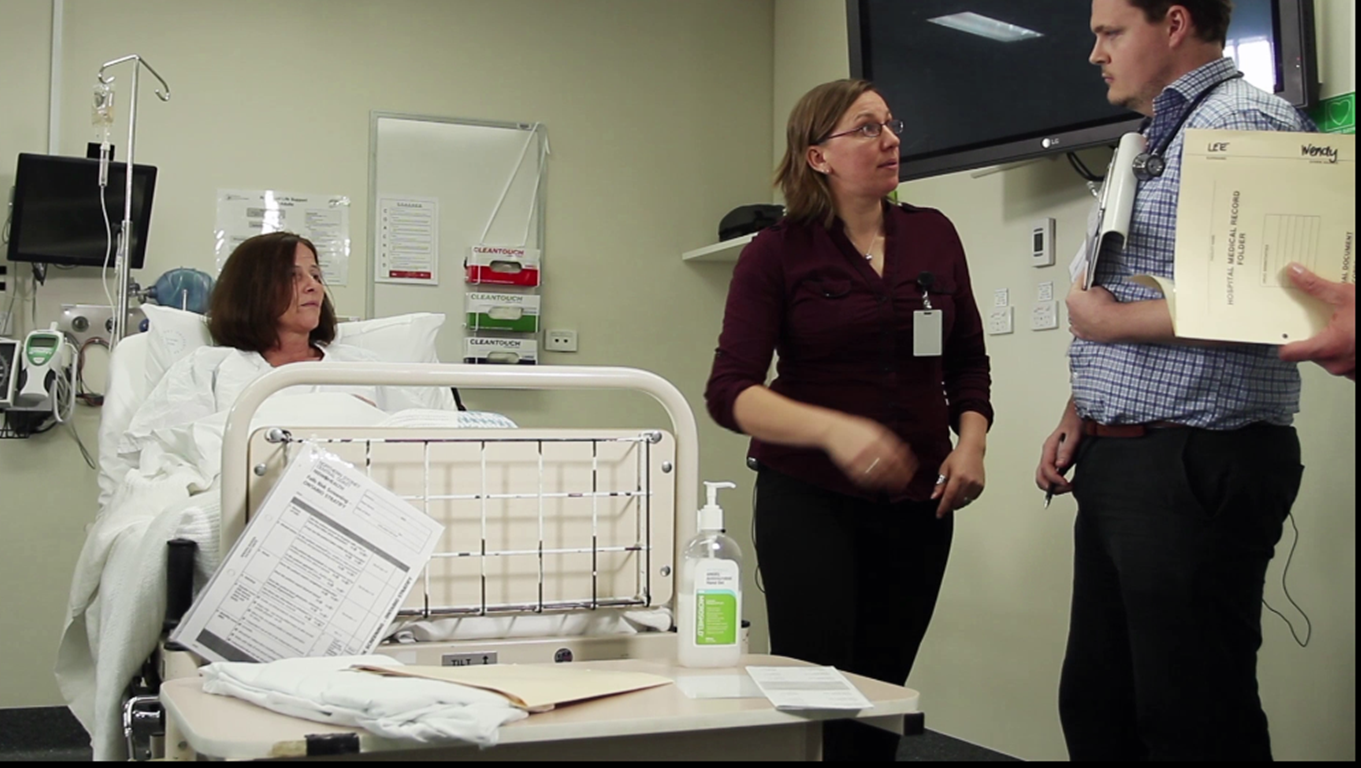Topic outline
-
This topic explains the differences between respectful versus disrespectful behaviour and the relationship between disrespectful behaviour and bullying.
Let's start with video hypotheticals.
Both videos, acted by volunteers, depict a teaching session for junior medical officers (JMOs) and students, led by a senior medical officer (SMO). The SMO presents a chest X Ray of a patient with a tension pneumothorax and asks one JMO to make a spot diagnosis. The JMO stumbles, and it is unclear whether he is poorly prepared or anxious.
In one video the SMO behaves in a respectful manner whereas in the other he behaves disrespectfully. The videos can be viewed here. A commentary is provided in the attachment 'hypothetical commentary'.
-
Respectful behaviour shows concern and regard for people. It is expressed, for instance, through polite and empathetic communication, by treating people equally, by involving people and by supporting them to develop and excel.
It's likely that most of us are respectful most of the time. However, we are all at risk of behaving disrespectfully under some circumstances.
Disrespect is expressed through hostility, humiliation, gossiping or otherwise demeaning treatment of people. Some describe it as incivility, “the exchange of seemingly inconsequential, inconsiderate words and deeds that violate conventional norms of workplace conduct” (Andersson & Pearson in Porvath, Foulk & Erez, 2015, p 1).
The commonly recognised features of bullying are also those of disrespectful behaviour (See Box 1). These behaviours are considered to be bullying when they are directed at a particular person, or repeated over time by a specific individual. However, isolated cases of disrespect can be also be upheld as bullying.
Box 1: Five behaviours of bullying
- Destabilization - for example, disrupting another's performance by repeatedly reminding him or her of mistakes, creating stress or assigning meaningless tasks
- Isolation - for example, preventing access to or opportunities for training or deliberately withholding important work-related information
- Overwork - for example, setting impossible deadlines or disrupting another's work unnecessarily
- Threat to personal standing - for example, insulting or teasing another
- Threat to professional status - for example, publicly humiliating or accusing another of lack of effort
Adapted from Djurkovic, McCormack & Casimir, 2006
Because it’s so common, disrespectful behaviour may be accepted as normal workplace behaviour - what's required to ensure high performance. This is particularly the case in high acuity settings. Or it might simply reflect how people have been conditioned to behave. People behaving disrespectfully often don't recognise their behaviour as inappropriate or appreciate its harmful effects. Of most concern, like bullying, people or lower seniority like junior doctors and nurses are more likely to be on the receiving end of disrespectful behaviour; and they are also least likely to be assertive in response to it, due to fear of reprisal, damaged relationships or giving offence.What are the consequences of disrespectful behaviour and bullying?
Like bullying, disrespectful behaviour directly contributes to a number of serious consequences including absenteeism, burnout and stress induced health problems.
Why bother with respect?
Leape et al (2012, b) encourage us to embed respect in our everyday dealings with people. “By enabling every worker to feel he or she is treated with respect, has the support he or she needs to do his or her job, and is appreciated” (2012, b, p 854), Leape is confident that our respectful treatment of others will enable healthy workplace cultures to flourish.
References
Appelbaum, SH, Semerjian, G & Mohan K;(2012) "Workplace bullying: consequences, causes and controls (part one)", Industrial and Commercial Training, 44: 4: 203 – 210.
Djurkovic, N, McCormack, D, Casimir, G. (2006),"Neuroticism and the psychosomatic model of
workplace bullying", Journal of Managerial Psychology, Vol. 21 Iss 1 pp. 73 - 88
Porath, C.L., Foulk, T., & Erez, A. (2015) How incivility hijacks performance: It robs cognitive resources, increases dysfunctional behavior, and infects team dynamics and functioning, Organizational Dynamics 44, 258—265.
Leape LL, Shore MF, Dienstag JL, Mayer RJ, Edgman-Levitan S, Meyer GS, et al. (2012) Perspective: a culture of respect, part 1: the nature and causes of disrespectful behavior by physicians. Acad Med. 87(7):845-52. (a)
Leape LL, Shore MF, Dienstag JL, Mayer RJ, Edgman-Levitan S, Meyer GS, et al. (2012), Perspective: a culture of respect, Part 2: Creating a Culture of Respect Acad Med.;87(7):853-8. (b).
Read, E; (2013) Correlates of New Graduate Nurses’ Experiences of Workplace Mistreatment, JONA, 43(4):221-228.
Read E, Laschinger HK. Correlates of New Graduate Nurses' Experiences of Workplace Mistreatment. J Nurs Adm. 2015;45(10 Suppl):S28-35.
Samnani, A. (2013),"“Is this bullying?” Understanding target and witness reactions", Journal of Managerial Psychology, 28 ;3: 290 – 305.
- Destabilization - for example, disrupting another's performance by repeatedly reminding him or her of mistakes, creating stress or assigning meaningless tasks

